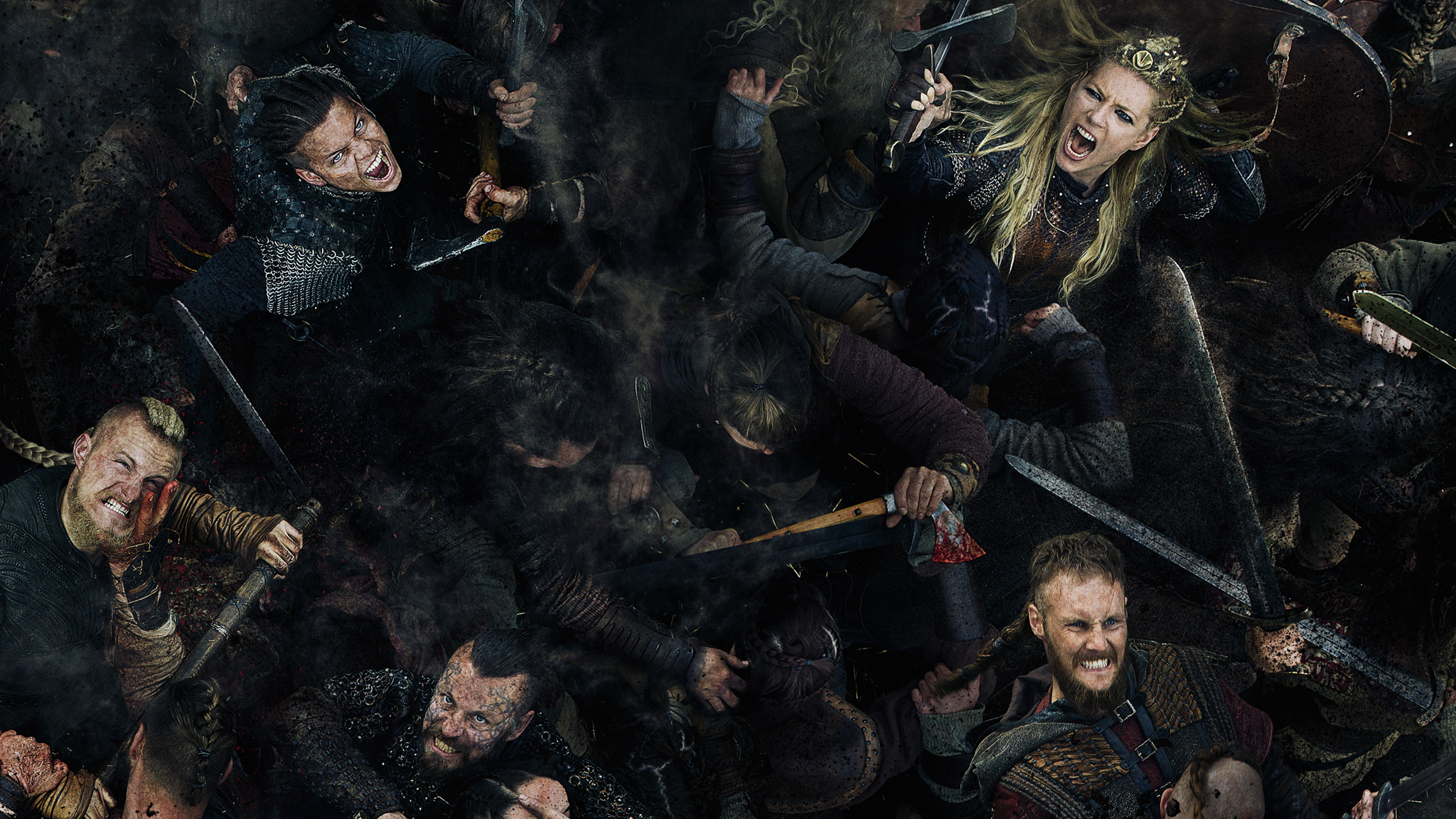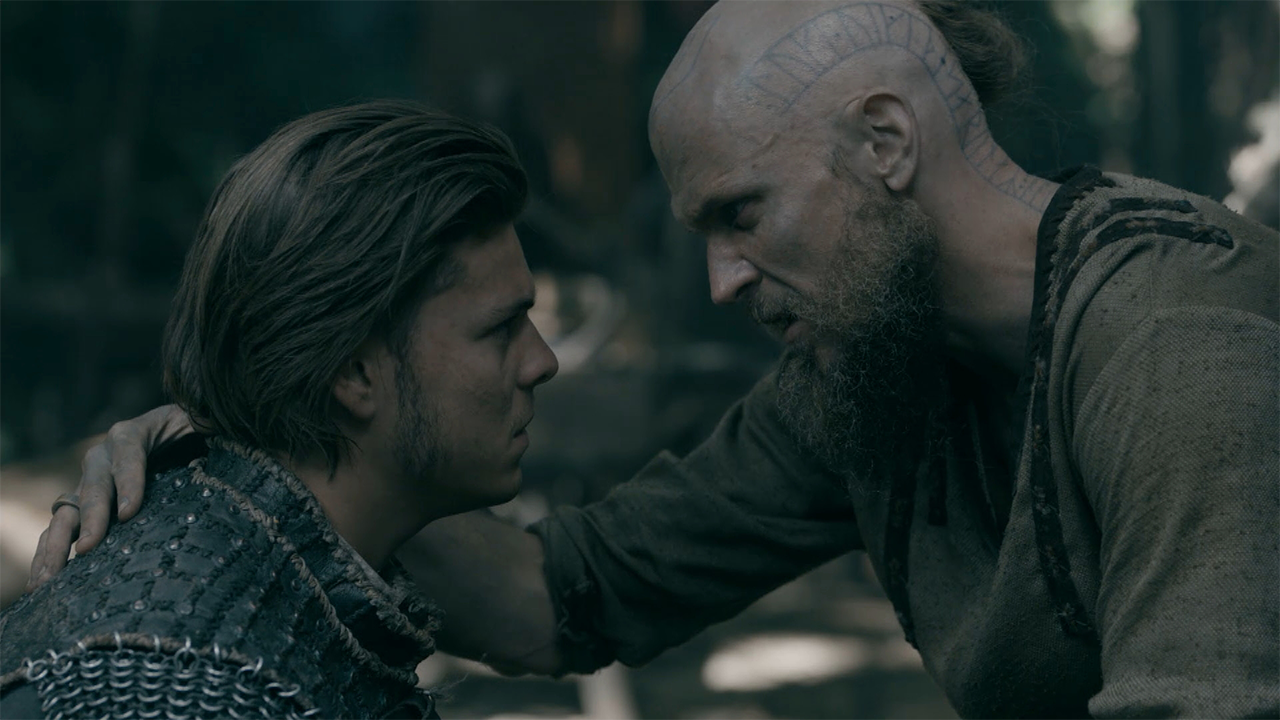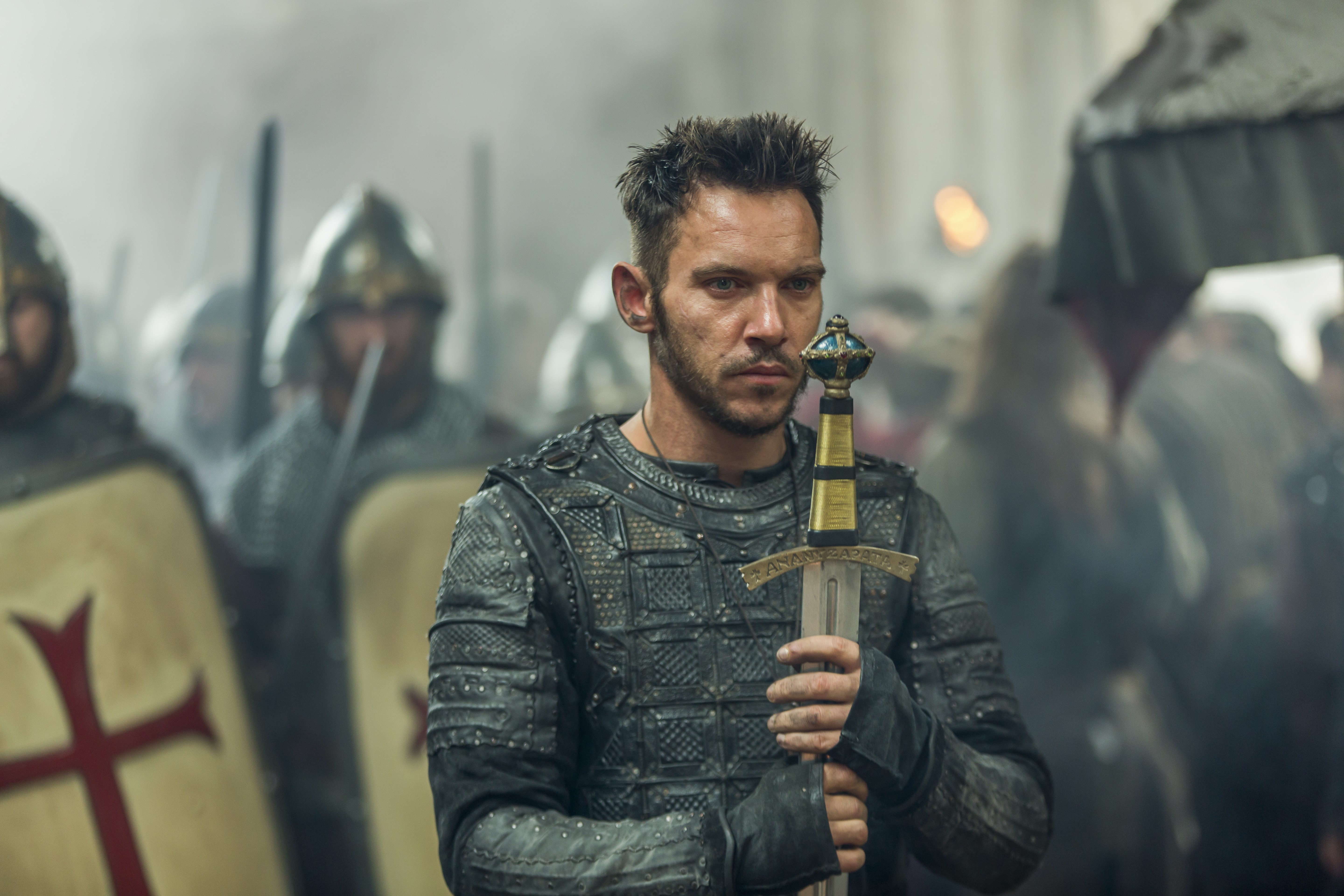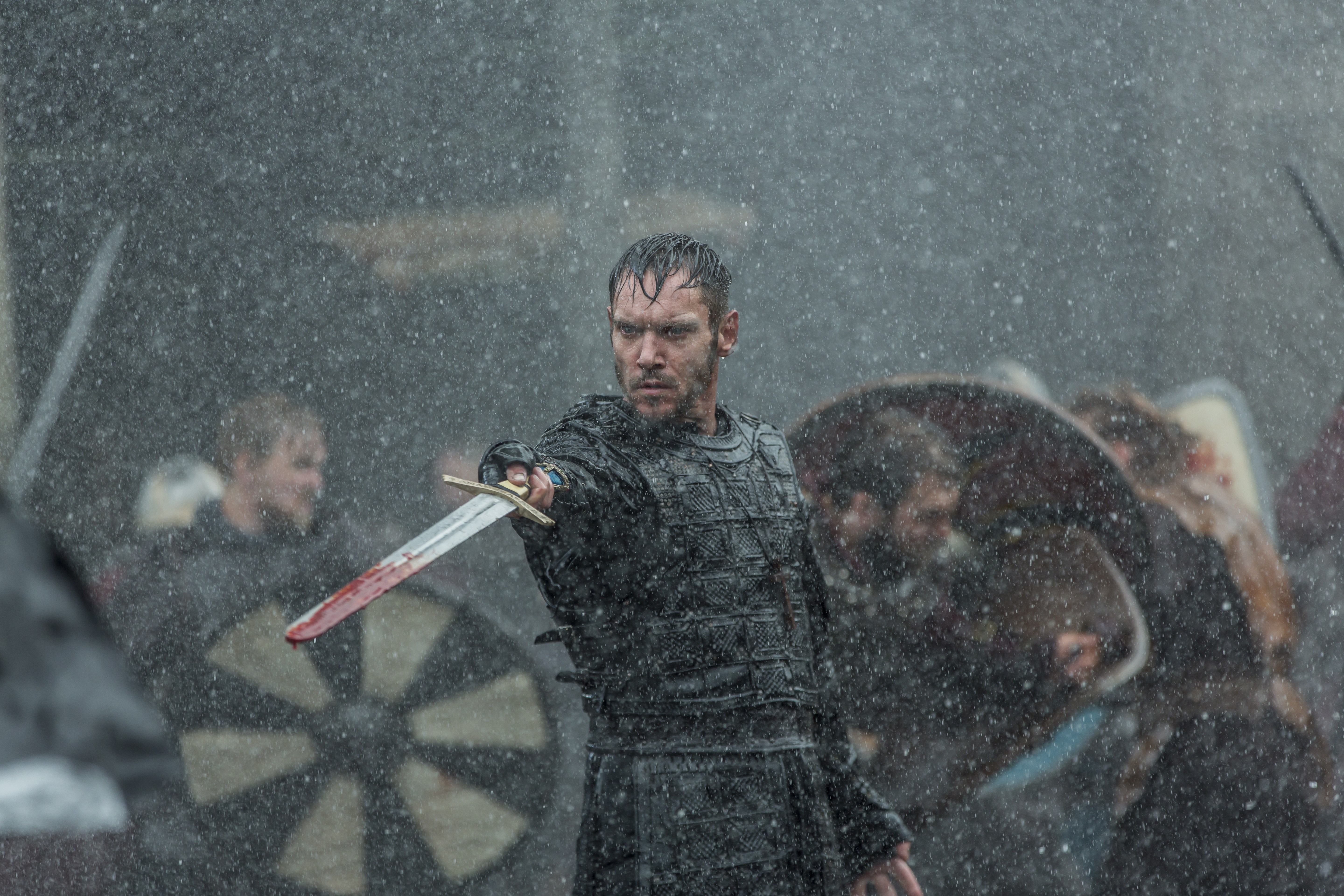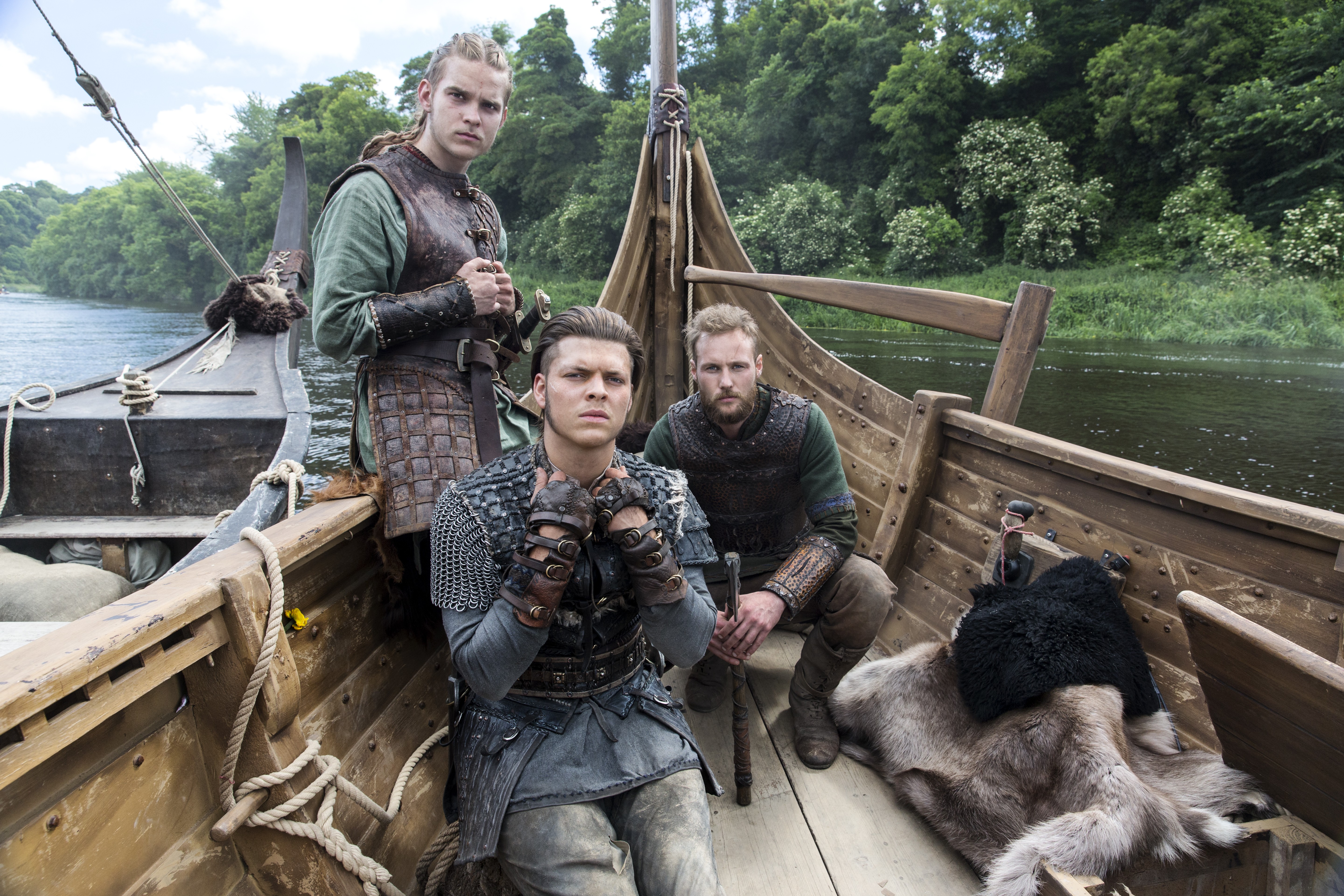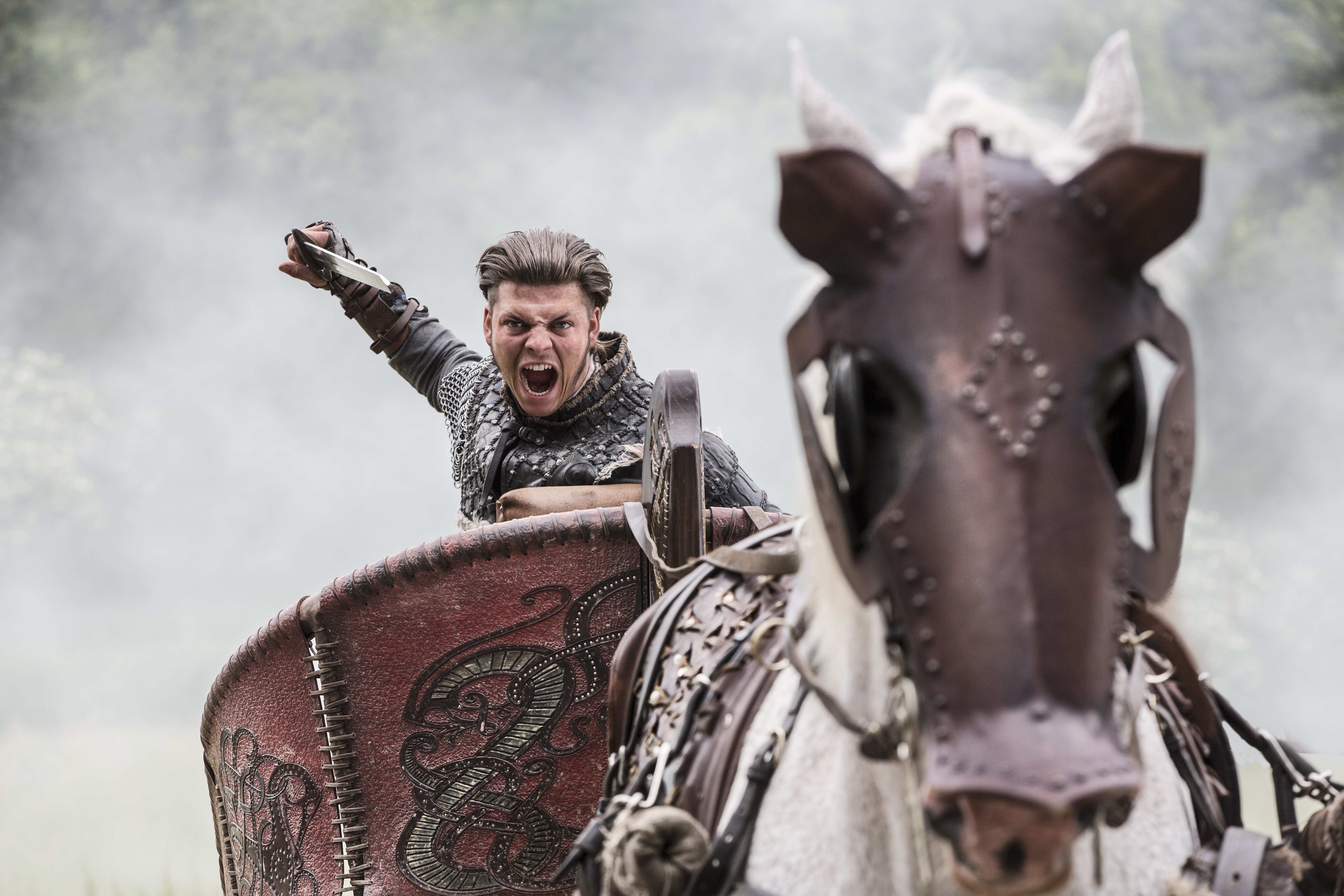Ivar the Boneless (Inwaer/Ingvar/Hyngwar) was one of the greatest leaders of Vikings and the legendary commander of the Great Heathen Army. He was the third son of Ragnar Lothbrok (and Aslaug) after Eirik and Agnar (Ragnar’s sons from Thora Townhart).
Ivar had four younger brothers; Bjorn Ironside, Halfdan Ragnarsson (assumed to be Hvitserk), Ubbe and Sigurd Snake-in-the Eye.
Most of us think Bjorn Ironside is the oldest son – because it is shown that way in the TV series – but that is not true.
According to the saga, Tale of Ragnar’s Sons translated by Peter Tunstall, Ivar was older and not only Bjorn Ironside was the fourth son but also Aslaug was his mother not Lagertha. Along with many other things, this was changed for the TV series.
If you would like to know what is real and what is not in Vikings, read our post here: Vikings in 30 Pictures – What is Real and What is Not?
Although Ivar was known as a ruthless warrior, he was described in historical accounts and sagas as the wisest one among Ragnar Lothbrok’s children.
Ivar the Boneless was known as a berserker. Berserkers were Viking warriors who went into a trance-like state of fury when they were fighting and yes, that is where the English word “berserker” comes from.
Table of Contents
Ivar’s Nickname/Epithet “Boneless” – A Disease or Something Else?
There are a few theories about the origination of Ivar’s epithet “the Boneless”. Some historians discussed Ivar was called “the boneless” because he was impotent. Although this theory sounds a bit far-fetched, the fact that Ivar never got married and had children might be a reason to not to discard it completely.
Another theory about the epithet suggests that Ivar was a skilled warrior with a very flexible physical form like a snake and that was the reason behind the epithet. A poem written in the 12th century named “Háttalykill inn forni” describes Ivar “having no bones at all”.
According to The Saga of Ragnar Lothbrok, Ivar’s epithet “the Boneless” was a result of a curse foreseen by his mother, Ragnar Lothbrok’s second wife, Princess Aslaug, who had the power of foresight.
It is written in the saga that Aslaug warned Ragnar Lothbrok to wait three days before consummating their marriage saying the gods would not be pleased and their child would be cursed otherwise. Ragnar ignored her warning and Ivar was born with legs with gristle-like structures instead of bones.

Ivar the Boneless and Lagertha
Here are some ** SPOILERS ** regarding the second half of Vikings Season 4, so it is better to skip to the next section if you still have not watched it.
There is no information that suggests a rivalry existed between Lagertha and Aslaug, Ivar the Boneless’ mother. Therefore, it is quite safe to assume Lagertha did not cross Aslaug/Kraka as shown in the 4th season of Vikings.
These events and Ivar the Boneless’ hatred of Lagertha were probably included to the storyline to simply add some spice to the show. So, the answer to the burning question in your mind “Did Ivar kill Lagertha?” is simply “No”.
Not only there are very limited sources regarding Lagertha’s life but also there is nothing in the accounts (most of which are oral accounts for your information) that suggests Lagertha was so involved with Ragnar Lothbrok’s other wives and children.
Read more about Lagertha here: Shieldmaiden Lagertha, Ragnar Lothbrok’s Wife
Ivar the Boneless and Floki
Floki and Ivar the Boneless become good friends in the show, however, these two might have never met. Even if they did, they probably did not have such a relationship. This is simply because there is a difference of more than 30 years between the assumed birthdates of Ivar (794) and Floki (830).
You can read more about the real Floki here: Real Floki (Vikings), Raven/Hrafna-Flóki Vilgerðarson
On a side note, Ivar the Boneless also probably never met Rollo considering the real-life Rollo is assumed to be born around 860 while Ivar is assumed to have died around the year 870.
Ivar the Boneless and Bishop Heahmund
Vikings season 5 features a new character introduced at the end of the 4th season: Bishop Heahmund played by Jonathan Rhys Meyers. The character is based on a real life clergy man.
There is no records suggesting a confrontation between Ivar the Boneless and Bishop Heahmund.
However, the real Bishop Heahmund (**This might be a spoiler for seasons to come after this one) died during the Battle of Marton while fighting besides King Æthelred of Wessex and Prince Alfred (King Aethelwulf’s sons and King Egbert’s grandsons) according to historical accounts.
The Viking army that won the Battle of Marton was led not by Ivar the Boneless but Halfdan Ragnarsson, who is assumed to be Hvitserk by some historians.
The Battle of Marton is a very important historical event as it was a battle after which Prince Alfred became the king of Wessex (after his brother King Æthelred died during or a short time after the battle – the time of death is unclear in the accounts).
Alfred the Great, as he was to be named later, not only defended the Kingdom of Wessex well against Vikings but also won some important battles.
Wessex was the only English kingdom that was not under enemy control at the time and King Alfred’s deeds played a very significant role in England’s survival and independence as a whole country.
Capturing Northumbria and Avenging Ragnar Lothbrok’s Death
After Ragnar Lothbrok was captured and killed by King Aella (although some other historical accounts tell us that he died of a mysterious disease, probably dysentery), Bjorn Ironside attacked Kingdom of Northumbria with his brothers to avenge their father.
Ivar the Boneless did not take part in these initial attacks and said he knew this was how Ragnar would die in the end.
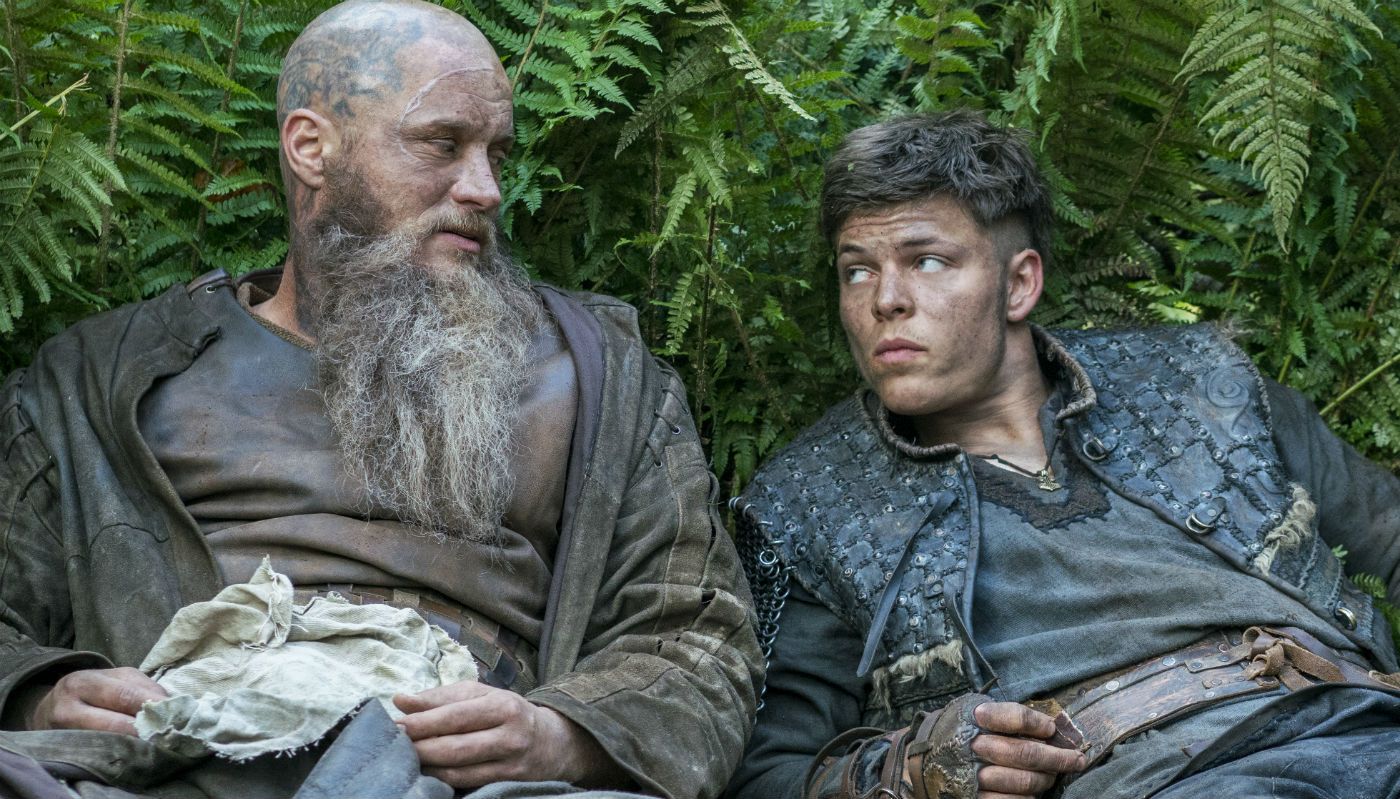
He made peace with and asked King Aella to give him some land only as large as an ox’s hide can cover. King Aella thought of Ivar as a fool and granted his request.
According to the story, Ivar the Boneless cut the hide in such a fine way that, in the end, it was possible for Viking men to build a fort in the land King Aella provided.
It is told the town established by Ivar is York although some accounts suggest York was already established and Ivar took it from English forces (kindly read below for more detailed information).
Ivar was not only a wise but also a generous leader and that is how he managed to recruit many local English warriors for his cause weakening King Aella’s forces significantly over time.
When Ragnar Lothbrok’s other sons led by Bjorn Ironside attacked the Kingdom of Northumbria for the second time (called by Ivar for an attack according to some sources), Ivar joined forces with them, conquered the kingdom and captured King Aella.
Ivar suggested that King Aella should be killed by carving “a blood eagle” on him. As depicted in History Channel’s TV series, Vikings, the blood eagle is performed by cutting open a person’s ribs, pulling them to the sides like wings, pulling out his lungs and spreading salt on the wounds.
According to some other accounts, Ivar the Boneless crossed the North Sea and invaded East Anglia with his brothers Halfdan Ragnarsson and Ubbe in 865. East Anglians did not resist, made peace with the Vikings and even gave them horses.
Ivar and the Great Heathen Army carried on north the next year and captured the city of York. The Kingdom of Northumbria was struggling with civil war at the time since King Aella has usurped the throne from King Osberht who has been ruling the kingdom for 18 years.
Facing a common enemy, King Aella and King Osberht joined forces, attacked York and penetrated the city walls. Vikings killed everyone who entered the city. Both kings were killed as a result of this failed attempt. Ivar assigned King Egbert to rule the kingdom.
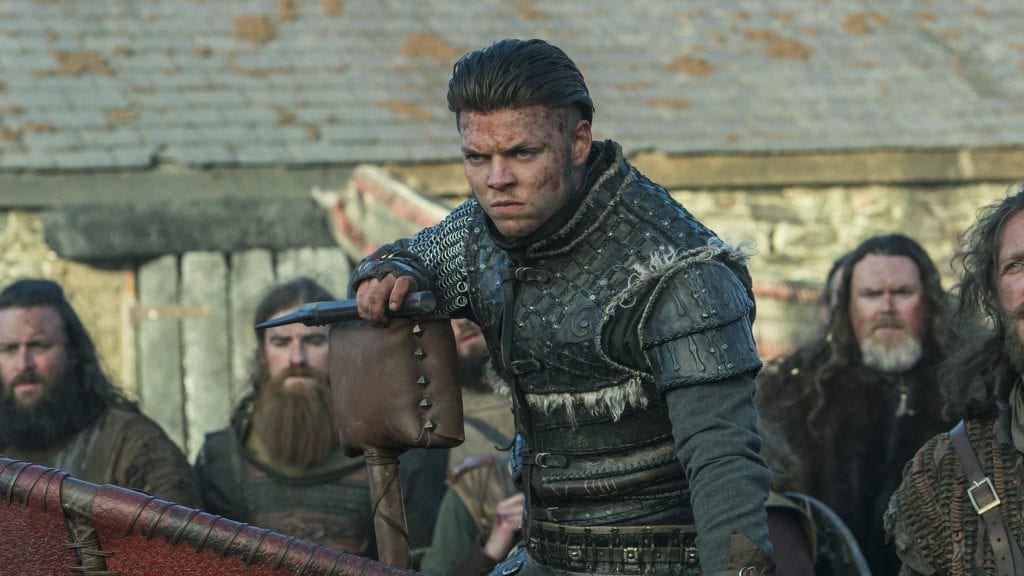
The Great Heathen Army’s Progress in England
Ivar and his men progressed to conquer the Kingdom of Mercia. The Great Heathen Army captured Nottingham where they spent winters. King Burgred of Mercia asked King Ethelred of Wessex and his brother Alfred for help in defeating “the brutal heathens”.
Joining forces with Wessex, the army of Mercia laid siege to Nottingham. Ivar was a fearless warrior but also a wise ruler. After seeing his forces were largely outnumbered, he made peace with the Kingdoms of Mercia and Wessex and returned to York in 868.
King Edmund’s Death
When Vikings returned to East Anglia they faced resistance by the forces of King Edmund of East Anglia. King Edmund was captured but refused to renounce Christianity saying his faith was more important than his life.
It is written that he was killed brutally by being hung on a cross and shot by arrows until he died.
Capturing Dumbarton Rock in Scotland
Ivar ruled Dublin together with Olaf the White. Together, they laid siege to Dumbarton Rock (also known as the Clyde Rock) in Scotland and although the garrison resisted for four months, it had to surrender when the Viking army cut off the water supply.
Vikings pillaged the city. Ivar and Olaf remained in Strathclyde for winter and returned to Dublin with slaves and booty they acquired in Scotland. They forced Constantine I, King of Scotland to pay tribute.
Ivar the Boneless’ Death
According to the Annals of Ulster, Ivar died of a sudden disease in 873. In the 19th century, it was suggested that Ivar might have died from brittle bone disease, also known as osteogenesis imperfecta, and this might have been the reason why he was called “boneless”.
Ivar the Boneless’ Grave – Two Different Theories
During their excavation in 1970s and 1980s, Professor Martin Biddle from Oxford University and his wife Birthe Kjølbye-Biddle discovered the remains of a 9-foot Viking warrior in Repton. They suggested that these remains might belong to Ivar the Boneless since the Great Heathen Army spent winters in this settlement.
These bones were originally discovered by Thomas Walker, a farm worker, in late 17th century. However, although the grave was recovered, the existence of remains was forgotten until Prof. Briddle and his wife unearthed the bones together with a sword and a small Thor’s hammer.
On a side note, Martin Briddle’s findings contradict “the brittle bone disease theory” regarding the origination of Ivar’s epithet. The skeleton found by the Briddles belonged to a warrior who was killed brutally by stab wounds on the head, arms and thighs.
The body in question was also disemboweled (probably after his death). His genitals might have been removed since a boar tusk was buried between his legs. According to Viking traditions, a body needed to be whole in order to enter Valhalla, that is why, a boar tusk might have been placed to replace his genitals.
It is also written in another historical account that the bones discovered were surrounded by partial remains of fifty women and two hundred warriors.
Considering Ivar’s significance and status as the warchief of the Great Heathen Army, these findings support the theory about the burial mound actually being the location of Ivar the Boneless’ grave.
In the Saga of Ragnar Lothbrok, it is written that Ivar wanted to be buried at a location that is exposed to be attacked by enemies and said that these enemies would be cursed even if they succeed in their attack. The burial site in Repton fits the description of such a place.
According to the Saga, William I of England (William the Conqueror) dug Ivar’s burial mound and saw that his body had not decayed. He was able to be victorious and succeed with his invasion only after he burned Ivar’s body.
Hope you liked our article about Ivar the Boneless. Share it if you could, thanks!




